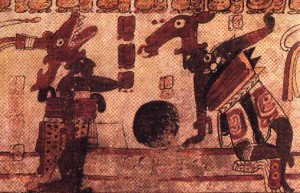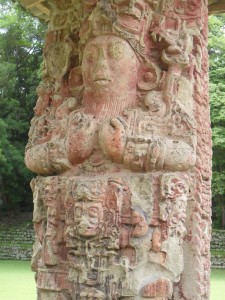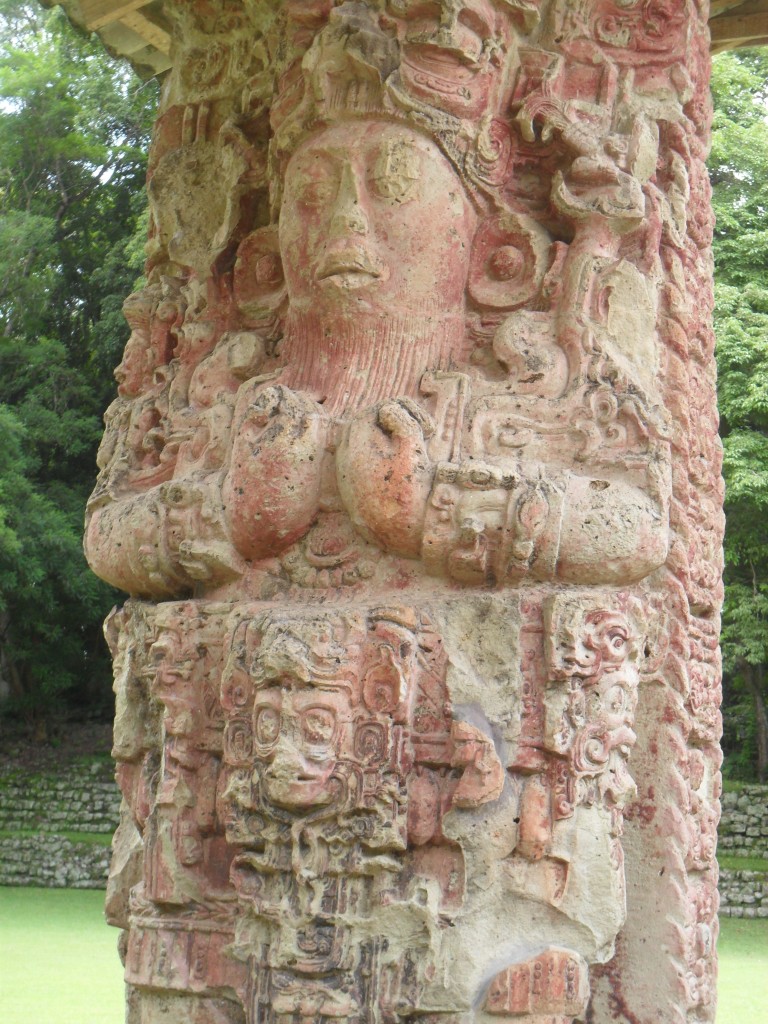 All great civilizations of the world have developed their own form of counting time, their calendar. Maya civilization developed several different calendars, which they accomplished through their outstanding knowledge in astronomy and mathematics. It is thought they developed thirteen calendars, however only seven have been discovered, with three of them still being in use by the Maya people:
All great civilizations of the world have developed their own form of counting time, their calendar. Maya civilization developed several different calendars, which they accomplished through their outstanding knowledge in astronomy and mathematics. It is thought they developed thirteen calendars, however only seven have been discovered, with three of them still being in use by the Maya people:The Cholq’ij, a 260 day calendar still being used in the highlands of Guatemala by practitioners of Maya spirituality. This calendar is mentioned in the Popol Wuj, Memorial de Sololá and Rabinal Achí.
The Choltun, a 360 day calendar still being used by Maya intellectuals. This calendar is metioned in many steles located in ancient Maya cities.
The Cholab’, also known as Ab’ or the Long Count, is a 365 day calendar used mainly by Maya intellectuals. This calendar is mentioned in the yucatec books called Chilam B’alam.
 The 365 days of the Cholab’ are divided into 18 periods of 20 days each. The number 20 arises from the cosmic and telluric energies of the fingers on the hands and toes on the feet. There are the 360 days (18×20), plus a 5 day period known as the Wayeb. This last period of five days is known in the west as the unlucky or lost days, but in the traditional Maya world view it is a time for introspection and gratitude to the Ajaw (Creator and Former of life). It is a space and time dedicated to cleanse ourselves in the four levels: intellectual, spiritual, emotional and physical. It is a time to review our actions – every positive and negative thing we have done for the last 18 months and the impact it has had in our lives. It is a time to accept the things that have happened to us, accept our mistakes and understand that everything is part of our growth and evolution. It is a moment to ask for the forgiveness of the people we have hurt during the year.
The 365 days of the Cholab’ are divided into 18 periods of 20 days each. The number 20 arises from the cosmic and telluric energies of the fingers on the hands and toes on the feet. There are the 360 days (18×20), plus a 5 day period known as the Wayeb. This last period of five days is known in the west as the unlucky or lost days, but in the traditional Maya world view it is a time for introspection and gratitude to the Ajaw (Creator and Former of life). It is a space and time dedicated to cleanse ourselves in the four levels: intellectual, spiritual, emotional and physical. It is a time to review our actions – every positive and negative thing we have done for the last 18 months and the impact it has had in our lives. It is a time to accept the things that have happened to us, accept our mistakes and understand that everything is part of our growth and evolution. It is a moment to ask for the forgiveness of the people we have hurt during the year.Some of the ways in which Maya people prepare for this introspection are by either fasting or eating only fruits and vegetables, by using the Chuj (sauna) to detoxify their body and by doing several meditations. They also make a thorough house cleaning, throwing away the things that are no longer useful and giving away the things that can still be used.
The Wayeb’ (which is the name in Yucatec language) is also known as Tz’apiq’ij (in Ki’che’ language). Tz’apiq’ij means closing the door of the days, in other words it means that we have come to the end of a cycle of 365 days and that we are now in balance and we have renewed our energy, we are ready to begin a new year, we are ready in every level to receive the first day of the Cholab’. This first day will fill the whole year with its energy, in Maya language it is called patan (carrier of the year), because every day of the year will have the energy of this day. There are four energies that function as carriers of the year:
Kej – the deer, this energy represents stability.
E – the path, this energy represents the intellectual, spiritual, emotional and physical paths.
No’j – wisdom and ancestral knowledge.
Iq’ – the air and the wind.
The first day of the Cholab’ calendar this year (2014) was on February 21. The carrier for this year is Kieb’ Kej (two deer). This year will bring stability and balance as its energy. As it is the year of the deer, Kej, who has a leg in each of the four cardinal points and sustains each of the four planes. Seek for balance in your life, for you will find it.
Latest posts by Lina Barrios (see all)
- Maya Cosmovision and the Modern World - January 11, 2018
- Interview w/ Lina Barrios - August 25, 2016
- Cholab’ (Ab’) New Year - February 21, 2014

